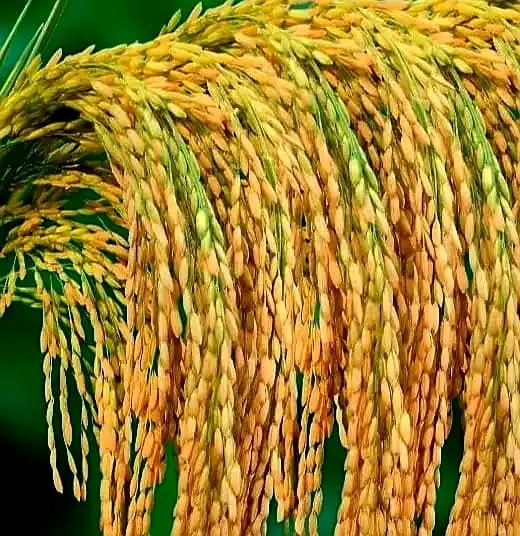How to Start a Successful Goat Farming Business | #goatfarming



BANANA FARMING MANAGEMENT | #bananafarmingmanagement
The Importance of Plant Spacing
An adequate space between your plants will reduce competition for light, will conserve water, and will provide more soil nutrition to each plant.
There is a limit to the amount of nutrients in your soil. By leaving plenty of room between plants, they can have a wide area from which to draw their sustenance. Keeping the area weed-free will also allow more nutrients to be available for the plants you want to grow.
As plants grow, light will be reduced through the developing leaf canopy. This shade will slow plants down if plants are too crowded. Leaving more space between plants allows more sun and brighter light to hit expanding plants, and this will result in faster, more robust growth.
Unseen competition for root room can also slow plants down. Plants thrive when roots can freely spread in loose healthy soil. Roots will also draw more moisture if they have plenty of room.
General space recommendations for some crops
Beets – 1 foot
Broccoli, cauliflower, cabbage and kale – 4 feet
Carrots – 1 foot
Corn – 3 feet
Cucumbers – 5-6 feet
Lettuce – 2 feet
Peas – can be planted thickly
Peppers – 3 feet
Potatoes – 18 inches
Spinach – 1 foot
Squash – 8-10 feet
Tomatoes – give the roots the same amount of width as the leaves take above ground. Determinate varieties will need less room than indeterminates

FACTS ABOUT RICE AND RICE FARMING
Facts about rice
Origin: Rice (Oryza sativa) is believed to have originated in the region around the Yangtze River in China and the Ganges River in India. Archaeological evidence suggests rice cultivation began around 8000-9000 years ago in these areas.
Diverse Varieties: There are thousands of varieties of rice, categorized broadly into long-grain, medium-grain, and short-grain types. Varieties differ in size, shape, texture, and flavor.
Nutritional Value: Rice is a good source of energy due to its high carbohydrate content. It also provides essential nutrients such as protein, fiber, B-vitamins (especially B1 and B3), and minerals like iron and zinc.
Global Production: The top rice-producing countries include China and India,which account for a significant portion of global production.
Rice farming
Climate and Soil Requirements: Rice typically grows best in tropical and subtropical climates with high humidity and abundant rainfall. It requires well-drained, clayey or loamy soils with good water retention properties.
Water Management: Rice is unique among cereal crops in that it can thrive in standing water. Flooding the fields during the growing season suppresses weeds, reduces pests, and provides the oxygen-depleted environment that rice plants prefer.
Cultivation Methods: Rice can be planted directly in the field by broadcasting seeds or transplanting seedlings. Transplanting is a common method in many Asian countries where seedlings are first grown in a nursery and then transplanted into the flooded field.
Harvesting: Rice is harvested when the grains have matured and the moisture content is appropriate for storage.

MANGO FARMING
Spacing for Mango Farming
The spacing varies from 10 X 10 M to 13 X 13 M. In dry areas, the spacing should be 10 X 10 M due to less growth. But, in heavy rainfall area & fertile soil, the spacing should be 13 X 13 M due to higher physical growth.
If your soil is infertile, then it must be supplemented at the time of planting. First, prepare a suitable pit for this. Then, add about 25 kg of farmyard manure along with 3 kg of Super Phosphate and one kg of Potash.
The row spacing (about 10 m) along with tree spacing (around 5 m) is supposed to be the best mango tree plantation distance. By this, you can easily plant around 70 mango plants per acre, which is considered as average mango plantation per acre.
Adding to it, one can also go for ultra-high-density mango plantation for more fruit production.
Irrigation in Mango Farming
Mango trees need less water than other commercial fruit tree farming like banana farming. Mango farm should be irrigated at an interval of two to three days, in the first year of your mango farming business. However, at the stage when they start to bear fruit about two irrigations are required.
You must give water to the fruits bearing plant at an interval of 10 – 15 days. Irrigation should be stopped after their full growth. Take proper care during the flowering stage. During this stage, stop giving them water. However, if irrigation does not stop, it may lead to bad quality mango fruit production.
How much water does a mango tree need?
Well, it all depends on the type of soil, on which you are growing along with the growth of your mango tree. Giving frequent water to mango tree, after the plantation, at the time of flowering and fruit bearing stage is the best possible way to get good quality mangoes.








